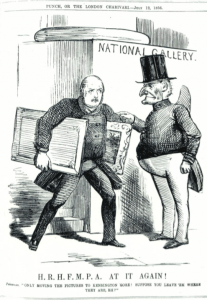Annotated Bibliography
Taras Shevchenko Storinka. “Taras Shevchenko’s Poem ‘My Testament’.” Accessed 1st February, 2021 https://taras-shevchenko.storinka.org/my-testament-poem-of-taras-shevchenko-translated-by-john-weir.html
I found this article while searching online for works by Taras Shevchenko, as his work would be considered primary sources. I chose to research Shevchenko’s work as he was a leading Ukrainian nationalist and poet, from the 19th century, with this nationalist movement being the focus of my dissertation. In the poem, Shevchenko outlines his desires for a free Ukraine, unbound from any Tsarist Russian oppression, which had banned the publication of documents and teaching in the Ukrainian language. Therefore, Shevchenko’s poems would be useful for me, as they offer a direct insight into the mind of Ukraine’s most prominent nationalist, whose work was hailed in awakening Ukrainian national consciousness.
Kostomarov, Mykola. “Two Russian Nationalities.” In Towards an Intellectual History of Ukraine : An Anthology of Ukrainian Thought from 1710 to 1995, edited by Ralph Lindheim, and George, S.N. Luckyj, 122-134. Toronto: University of Toronto Press, 1996.
This is a poem written by Mykola Kostomarov, a pan-slavic activist, ethnographer, Ukrainian historian and author. In the poem, Kostomarov highlights the differences between Ukrainians and Russians, with the intention of identifying a distinct Ukrainian identity. Altough the poem doesn’t make any case for Ukrainian separatism, it can still be used to analyse the feelings of the Ukrainian nationalists. In order to try and suppress the Ukrainian nationalist movement, the Russian Imperial authorities tried to deny any differences between Ukrainians and Russians, arguing that they were the same people. Subsequently, I believe this is a good primary source, as it makes clear examples of how the Ukrainian people differ from the Russians, therefore legitimising the claims made by the likes of Taras Shevchenko.
Miller, Alexei. The Ukrainian Question. Budapest: Central European University Press, 2003.
This is a book that examines the Ukrainian nationalist movement, with an emphasis on the Russian authorities reaction to the Ukrainian question. In the book, Miller explains the origins of the Ukrainian nationalist movement, with its awakening coinciding with events like the French Revolution and the American War of Independence. I find this useful because, it links back to what Shevchenko said about freedom, with the Ukrainian nationalists wanting independence and liberty. Furthermore, the historiography verifies Kostomarov said about divergences between Ukraine and Russia, with middle class intelectuals in Ukrainian Universities being inspired by events in France and America, which encouraged Ukrainians to start secret societies and publish literature in the Ukrainian langauge.
